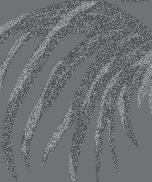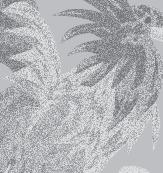

DARK LABORATORY



ON COLUMBUS, THE CARIBBEAN AND THE ORIGINS OF THE CLIMATE CRISIS
TAO LEIGH GOFFE

Dark Laboratory
Dark Laboratory ¸
ON COLUMBUS, THE CARIBBEAN AND THE ORIGINS OF THE CLIMATE CRISIS
Tao Leigh Goff e
HAMISH HAMILTO N an imprint of
HAMISH HAMILTON
UK | USA | Canada | Ireland | Australia India | New Zealand | South Africa
Hamish Hamilton is part of the Penguin Random House group of companies whose addresses can be found at global.penguinrandomhouse.com
Penguin Random House UK , One Embassy Gardens, 8 Viaduct Gardens, London SW11 7BW penguin.co.uk
First published in the United States of America by Doubleday, a division of Penguin Random House LLC 2025
First published in Great Britain by Hamish Hamilton 2025 001
Copyright © Tao Leigh Goffe, 2025
Page 343 constitutes an extension of the copyright page Map copyright © David Lindroth, Inc., 2025
The moral right of the author has been asserted
Penguin Random House values and supports copyright. Copyright fuels creativity, encourages diverse voices, promotes freedom of expression and supports a vibrant culture. Thank you for purchasing an authorized edition of this book and for respecting intellectual property laws by not reproducing, scanning or distributing any part of it by any means without permission. You are supporting authors and enabling Penguin Random House to continue to publish books for everyone. No part of this book may be used or reproduced in any manner for the purpose of training artificial intelligence technologies or systems. In accordance with Article 4(3) of the DSM Directive 2019/790, Penguin Random House expressly reserves this work from the text and data mining exception
Printed and bound in Great Britain by Clays Ltd, Elcograf S.p.A.
The authorized representative in the EEA is Penguin Random House Ireland, Morrison Chambers, 32 Nassau Street, Dublin D02 YH6 8
A CIP catalogue record for this book is available from the British Library
ISBN : 978–0–241–62855–3
Penguin Random House is committed to a sustainable future for our business, our readers and our planet. This book is made from Forest Stewardship Council® certified paper.
To the islands, the coral reefs, the blue-footed boobies, the mountains made of guano, the Calcutta mongoose, the budding marijuana, and the volcanoes with which I have written this book.
Some of those that work forces, Are the same that burn crosses.
—RAGE AGAINST THE MACHINE, “Killing in the Name,” 1992
We are dreaming all wrong. Art is otherwise, all that is left, able to lift the grime and glitter caked under eyelids and halt, thereby, our crippled, crippling dreaming. Truth is otherwise. It risks all to be born, to be unstoppably, irresistibly alive.
—TONI MORRISON,
The Foreigner’s Home, 2018
Everyting flood out!
— BRIDGETTE “TUTTY GRAN ROSIE” BAILEY, 2013
BAHAMAS

Cayman Brac
CUBA








CAYMAN ISLANDS




Guanahaní
H i s p a n i o la



























































































HAITI (Ayiti) JAMAICA (Xaymaca)










Navassa (Devil’s Island)
























COLOMBIA DOMINICAN REPUBLIC

Maroon Town

Jamaica (Xaymaca)
CARIBBEAN SEA
Cockpit Country Leeward Maroons Montego Bay





Ocho Rios Negril











CARIBBEAN SEA GoldenEye



Moore Town Kingston WindwardMar o o ns



7. The Curious Case of the Calcutta Mongoose in Jamaica
8. Pedagogies
A Note on Terminology
When we surrender to language that limits our capacity to identify the structures of power that enforce racism, we have already lost half the battle. A colorblind approach prevents identifying anything at all about systemic inequality. I use Black with a capital B to denote references to Black people. I use a lowercase b in reference to the color black and abstract senses of blackness and anti-blackness. I use a lowercase b for “brown” because the term has a different political trajectory and is used by many disparate groups with varying and more diffuse meanings than the history of the Black Power movement. Relatedly, I use a lowercase w for “white” because while it is also an important racial category that should be spoken about more often, it does not have a coherent political history, community, or tradition, though white supremacy is a potent, divisive force.
Because there are many forms of slavery that vary as labor institutions across time and space, I use the specific terms “chattel slavery” and “racial slavery” to describe the European transatlantic trade of Africans who were enslaved. The distinction is important because historically (and in the present) there are multiple violent forms of slavery, but none have treated humans as property to be bought and sold at auction, stripping people of their basic person-
hood, in the way that the enslavement of Africans took place during the European colonization of the Americas, a dehumanizing and racializing process that took place from the sixteenth to the nineteenth centuries.
When referring to the system of temporary contract-enforced debt labor that coincided with and followed racial slavery in the nineteenth century, I use the term “racial indenture.” This nomenclature is distinct from the “indentured servitude” of white Europeans from an earlier period. Muddying the terms erases the racializing nature of the labor scheme for people in the nineteenth century who were primarily Asian (Chinese and Indian) and were racialized by the process because of the proximity to racial slavery and Black people. There were also indentured laborers from Africa and Southeast Asia who were forcibly brought to the Caribbean. By referring to these people, who rebelled against inhumane labor conditions, as “workers” or “servants,” we belittle the fraught nature of volition and consent under the mutilation of the whip on Caribbean plantations.
Race is a construct that is full of social meaning that translates as political power. I have carefully chosen the following terms not to enshrine false hierarchies, but to identify how people have historically identified themselves against the terms of colonial conquest. In regard to people indigenous to the Americas, I use the related terms “Amerindian”/“American Indian”/“Native”/“Native American”/ “Indian”/“Indigenous”/“First Nations,” understanding that they are not synonymous in meaning. According to the regional context of what various Indigenous peoples in different countries have historically called themselves, I alternate between terms.
Relatedly, the overlap between the terms “Indian” (Columbus’s misnomer used to describe Native Americans) and “South Asian” is pertinent to the premise of this book. In the Caribbean context, I will sometimes use “East Indian,” “Indo-Caribbean,” or “Hindustani” interchangeably and according to regional context.
I use the terms “enslaved African/African/Afro-,” which are not interchangeable, to describe different Black identities, and avoid
A Note on Terminology xvii
using the word “slave” or “Negro” or any of their derivations or translations in other European languages.
I use the term “Chinese” in favor of “Sino” based on regional preference. Sino tends to have a foreign-policy connotation in the Western world that can at times flatten Chinese heterogeneity. I avoid the term “coolie” because of the racial injury that it carries when spoken in varying national contexts to refer to Indian, Chinese, and Southeast Asian subsistence laborers and people.
I do not use terms such as “half” to describe people or other racial fractions because the eugenicist logic of blood quantum, used by the U.S. government to police Native peoples, is so casually spread throughout our everyday language. Relatedly, ahistorical terms such as “biracial” are not useful to me or the arguments in this book. For similar reasons, the term “mixed-race” is not useful to me or the arguments put forth in this book (though I recognize these are commonplace terms that others identify with). People of mixed heritage have existed for generations and centuries without such designations that can often serve to splinter possible political coalitions. Beginning to disavow these mathematical terms is a step toward rejecting these norms of valuation and categorization of human life on a pseudoscientific genetic scale we know often to be Eurocentric or anti-black.
Introduction
Mountain Ballads
Mountains hold the echoes of history. The vibrations and shock waves of the climate crisis are written in stone, absorbed over the course of geologic time dating back more than four billion years. These mountain ranges were once submerged underwater. If we measure the span of existence by the recent rock record, it tells a layered climate history of precious materials stolen from the earth—mountains of coral, gold, bauxite, and guano—sedimented. Time avalanches with the heaviness of histories of labor exploitation as we reckon with the overwhelming and inevitable ecological crises of the twenty-first century. Within each chapter of climate history exists a labor history, and we draw upon the energy of those who have gone before us. Those forced to extract from the land continue to be deemed disposable for the price of so-called technological progress. The racial regime determined who was forced to extract ores from the earth, and it continues to this day with unnamed millions mining cobalt to source lithium-ion batteries to satisfy the demand for the rechargeable batteries of our electric cars and smartphones.1
This is our current perverse geological reality of powering socalled green technologies and clean energy solutions. Standing at the precipice of climate collapse, we feel the increasing pressure for the planet to implode with each breath we take. Yet, as a global community, we continuously fail to address the origin of the problem. Without economic and historical analyses of the origins of the climate crisis, how can we expect to understand its sedimented layers?
While it is easy to picture plumes of smoke as the primary output of global warming, we must ask questions about the global economy that preceded our dependence on fossil fuels and what remains unseen. The brutal order of plantations organized the world before there were smokestacks and factories. The economies and ideas of plantation slavery have irreparably scarred the natural environment. Before idyllic pastures, mass deforestation was necessary to clear the way for farming. Plantation owners and overseers mutilated the flesh of those they held captive under the whip. With each tree felled, carbon was released into the atmosphere. Sacred branches, hundreds of years old, that had witnessed the first European colonizers were razed in an instant. Gone with this botanical life were the multitude of medicines and materials critical to Indigenous life and traditions. Vacating the land of vast and complex biomes and ecosystems, seventeenth-century monocrop agriculture transformed the planet as new agricultural practices stripped the soil of nutrients. While precious metals and rocks—gold, silver, and quarries of marble—had long been prized throughout the human history of mining, coal and oil have transformed how the world breathes. Agricultural and mining industries asphyxiate the future, the smoke emitted from fossil fuels burning our lungs as it propels a cycle of greed and disposability. Today, wind currents carry debris from faraway forest fires that irritate our airways as we inhale a sky turned a burnt shade of orange. The air is hazy and thick with the ashes of those who have been deemed disposable.
High in the mountains where the air is fresh, the land holds the memory of existential hope amid ecological catastrophes. Mountains carry messages that have been communicated across time and space. The land recalls things that we cannot. Across Black poetic
Introduction: Mountain Ballads xxi traditions, mountains have held significant political, religious, and environmental meaning. “Go, tell it on the mountain.” James Baldwin returned to the lyrics of the African American spiritual for his 1953 book.2 “Over the hills and everywhere.” Initially, Baldwin was going to name his Jim Crow narrative Crying Holy; the sound of the Black Church in these mountain lyrics was Baldwin’s choice for his urgent articulation.
During the nineteenth century, the lines reverberated from African Americans as populations passed secret instructions about how to travel and communicate safely across mountain ranges to freedom. The message of freedom from the Christian Testament of the Bible was amplified and reinterpreted alongside the prophecy of Black hope and liberation. The good news of the Underground Railroad spread across the landscape of Appalachia and the Caribbean and the Atlantic seascape. It stretched from the Bahamas to Mexico to Nova Scotia.
When, in 1967, Martin Luther King Jr. famously asked, “Where do we go from here?,” he could have easily been asking a climate question.3 From the mountaintop there is a scale of global imagination and collaboration needed for salvation from the climate crisis. King made this speech the day before he was assassinated, perhaps prophesying that he would not make it to the Promised Land, but that God had shown him—as he had shown Moses—a view from the mountaintop. Protest songs echo across mountains as climate movements grow with the same demands for racial justice and land sovereignty.
Freedom for everyone requires a confrontation with the capitalist greed upon which Western society was founded. That sin of chattel slavery was cultivated on plantations across the United States, the Caribbean, and Latin America for centuries. Stolen land and stolen life extend across the hemisphere from sea to shining sea, and so too do the freedom trails that Black and Native peoples built during the time of enslavement out of the wilderness from Vermont to Haiti to Argentina. Black runaways had long carved clandestine routes out of the forests to freedom alongside the paths of Native peoples established thousands of years earlier. Both Black and Native
xxii Introduction: Mountain Ballads
peoples looked to the stars, reading constellations toward routes of freedom.4 For centuries, nations of Afro-Indigenous peoples found sanctuary in swamps and bogs. From the Seminoles of Florida to the Garifuna of Belize, people echoed declarations of Black Native sovereignty in parallel and in unison. Over the centuries, survival has become an art form that is also an ecological philosophy; Black and Indigenous peoples understand what it means to survive multiple time lines of apocalypse. The genocide of colonial encounter is ongoing, visible in the uneven effects of climate crisis on people of color.5
By the year 2050, it is estimated that one billion people worldwide will be displaced due to natural disasters. Within the next twenty years, the majority of the world’s biodiversity will have been lost due to the endangerment of key ecosystems, including coral reefs, mangroves, and mountains.6 Tsunamis, active volcanoes, tornadoes, earthquakes, and unrelenting heat waves abound. While I am not a climate scientist, as a professor of literature and history, I have evolved my lesson plans to face the cascade of global ecological crisis. It is the reality and the responsibility of the individual to face this crisis and our role within it. The weather is not simply changing, as climate deniers would like us to believe. We are experiencing the consequences of a centuries-long cycle of exploitation of people of color, whom European colonial powers have forced to extract resources from the earth. The archival research I undertake on the history of racial slavery feels detached without reckoning with the climate crisis as an ongoing colonial crisis.
Poring through ledgers in Caribbean archives, I return each year not knowing what hurricane season will destroy of the delicate yellowing papers, the records the British, French, Danish, Dutch, and Spanish left behind of their exploits. Academic researchers seem to care more for the humidity and climate control of such documents than they do for human life on these islands, the descendants who have survived these regimes. To conduct research in a vacuum is a cold, unethical, and extractive approach. While my career began in such dusty record offices and official state archives in tropical countries, it soon led me to the outdoors and the importance of reclaim-
Introduction: Mountain Ballads xxiii
ing environmental histories for people of color. I began to hear the birdsong that we are losing. I knew these soundtracks had been there over millennia and that we were in danger of losing them note by note just as the birds lose their habitats. The research methods I learned spending a decade in Ivy League classrooms at Princeton and Yale—close reading and other forms of textual analysis—were important, but they no longer served me. Why set about the mission of trying to extract some hidden meaning that only those specifically trained and deemed sufficiently erudite can interpret?
Instead, I learned to let go, to surrender to my surroundings. I became adaptive and iterative in my approach, which led me to become the founder of my own initiative, the Dark Laboratory. My lab is a space for research on climate, race, and technology, and, more important, it is a philosophy. We at the lab understand that climate crisis cannot be solved without solving racial crisis. The two are inseparable. With over thirty members worldwide, from Helsinki to Hilo to Portland to New York, we collaborate on a wide range of creative storytelling projects centering on Black and Indigenous ecologies.
Once I realized that European colonial archives are evidence lockers full of crimes against humanity, I began to stop arguing the case in court, as it were. As it often occurs with genocide, there is simply too much evidence. Those who have benefited from the crimes of colonialism refuse to be convinced. The weight of transatlantic history and its impact on our current climate crisis is overwhelming. The evidence is so proudly and meticulously preserved. It becomes liberating then to evaluate not what lies enclosed within the walls of colonial architectures, but to begin to comprehend the significance of what is outdoors. What was stolen from the natural environment and can still be salvaged. Ways of life, scientific traditions, philosophies of environmental coexistence. The magnitude of what was stolen in the past is only a small fraction of what can be restored in the future. There are unborn worlds of scientific possibility from multiple traditions with answers, strategies, and solutions for tackling the climate crisis. Denial of the colonial condition, denial of the origins of the crisis, limits our imagination and how to
live after. Denial clouds our memory of the thriving world markets that functioned before the advent of modern capitalism.
In my second year of graduate school, I enrolled in a course taught by former U.K. prime minister Tony Blair called “Faith and Globalization.” After the photo ops were done, I realized that class taught me how at odds my presence as a human being was with the curriculum. It was befitting that this was a cross-listed Yale business school and divinity school course. Future CEOs and reverends sat side by side, and then there was me. The final exam was to create a business plan for a religious startup company. Many churches are, after all, business enterprises. During class discussion, when asked to answer the question of when globalization began, I raised my hand and said, “Fourteen ninety-two,” noting the Christian expedition undertaken in the name of Spain. Others, including the teaching assistant, were content to celebrate the 1970s as the genesis of globalization. They saw it as a booming period of economic and technological growth that brought the four corners of the earth together like never before. But what about my ancestors who arrived here hundreds of years ago? I asked. I thought of the violence of the modern world wrought by Christopher Columbus’s arrival in the Caribbean carrying the cross. Faith and globalization. Africa, Asia, the Middle East, and Europe were all joined across the chain of islands where Indigenous peoples were dispossessed and murdered.
This is my inheritance.
I gathered the courage to ask: Was this not globalization? The TA moved on. After class, when everyone else had gone, he apologized to me for being incorrect with his 1970s definition. He had never heard my definition of globalization or modernity beginning in 1492. I am sure Professor Tony Blair was not ready to address this time line of global modernity and the British Empire’s role in it. Often absent from class, he was on his own crusade in the Middle East, where he was part of a special envoy of so-called peace mediators. (Though he admitted to us students that he could not accurately draw a map of Palestine and Israel.) Since I took that course and grappled with its contradictions, the urgency of the communities I am accountable to has motivated my research on stolen land
Introduction: Mountain Ballads xxv and stolen life. We cannot afford to wait for the change of peacekeepers; these populations have already withstood centuries of violence, and the pace of peer-reviewed publications behind academic paywalls is too slow. We are operating on a different timescale of reckoning with the long and violent impact of globalization.
In the mountains, the soundtrack of nature provides answers to what sustained peoples who have managed to maintain their sovereignty for centuries, such as Maroons across the hemisphere and Native tribes. History textbooks cannot convey the visceral nature of what is at stake. And so, this is an attempt to write neither a revisionist history nor a science textbook. Instead, it brings together historical evidence and scientific methods to ask urgent, philosophical questions about whether we want to live differently. While books are currently being banned in Florida, the planet’s survival depends on us writing history together and strategizing beyond national and disciplinary boundaries. A call-and-response between the sciences and the humanities, between arts and technology, is more critical than ever. I hope Dark Laboratory shows the necessity of interdisciplinary methods for our collective global survival beyond the climate crisis.
This book asks questions about how deeply committed we are to the cannibalism of capitalist economic growth. The United States and the West consume the largest share of corporate profits, emit the most carbon, and control the environmentalist conversation. Conducting research abroad has shown me how other worlds and economies that don’t degrade the natural environment are more than possible; they are thriving. Why do we refuse to heed the successes of green and sustainable island nation communities?
While hiking in the mountains of the Caribbean and Tahiti’s tropical rainforests, these philosophies became even more apparent to me. There are other ways of breathing, of being, that require reciprocity and tuning in to nature. At dusk, I made field recordings of what sounded to me like jungle symphonies of toads, birds, and beetles, noting the similar timbre from the paradise of the Pacific to the Eden of Atlantic islands. The rising volume of the chattering birds, patient buzzing cicadas, the fluttering wings of bat colo-
Introduction: Mountain Ballads
nies, and the mating call of tree frogs—each sound wave resonates through me. Once you tune in, you will not be able to unhear it. Your ancestors have heard these soundtracks for generations, and so have mine.
Mountains are political geographies of boundary-making and -blurring. Dissonances radiate. Rain showers pour, filtering nature’s sounds and playing different notes than were possible before. The water absorbs and refracts the energy. The sound on thatched roofs feels different from that which reflects off corrugated zinc rooftops. Through the drops of water, staccato claps of thunder bellow as the lightning intensifies. The earth drinks with thirst. Whether urban or rural, our surroundings are loud with a rich cacophony, ecologies living symbiotically, parasitically, and in forms of relation we don’t yet have the language to understand. Ancestral ballads are the ambient sounds that surrounded your forebears and mine. But many of nature’s sounds will never be heard again. With each extinction event, the irrevocable silence grows heavier. The earth’s condition is terminal and has been for some time, and therefore so is ours.
From peak to peak, encrypted messages are sent from the hollers of Appalachia to the hollows of the Blue and John Crow Mountains in Jamaica to Mauna a Wākea in Hawaiʻi to Tai Ping Shan in Hong Kong to Arthur’s Seat in Scotland. Mountain ballads hold these promises to protect the climate that has nurtured us. The musical notes are layered with lore and with the protest of sacred chants repeated against mountaintop removal in Kentucky, the construction of the Dakota Access Pipeline at Standing Rock, bauxite extraction to produce alumina in Jamaican Maroon territory, and the construction of the NASA Thirty Meter Telescope on Hawaiʻi’s tallest mountain. Mountains are biodiverse biomes under threat. They are sacred sites of worship and mourning. Businesses raze consecrated burial mounds of Native peoples to build the slopes of luxury golf courses watered by automatic sprinklers daily to maintain the pristine illusion of pastoral beauty, suburbia, and rolling hills such as that at Shinnecock Hills Golf Club on Long Island. Due to isolation and lack of technological infrastructure, mountain dwellers are among the world’s most at-risk and impoverished
Introduction: Mountain Ballads xxvii communities, protected by (and protecting) valleys and foothills.7 From the lowlands to the highlands, they know how “to live on little,” to echo bell hooks’s Affrilachian elegy for her native Kentucky: we a marooned mountain people backwoods souls we know to live on little.8
So many have had no choice but to keep living after, immediately preparing for the next disaster. The soil reverberates the song of sovereignty by those who have been the protectors for millennia. The poetry of the future is just this, to know to live on little. To fight for the climate beyond crisis, we must learn this song. We must not waste our precious nonrenewable natural resources. The global environmental struggle is a chain of call-and-response over the generations.
Profiteering empires and transnational corporations have devised systems to silence the songs of dissent that echo from mountaintops. In 1883, the British banned African drumming in Trinidad in response to the Canboulay riots. The British also controlled and criminalized drumming in West Africa. In 1793, drums were banned in South Carolina during a rebellion by enslaved Africans. Yet defiant anthems travel from mountain range to range: freedom chants, forbidden drumbeats, coded spirituals, and now the battle cries of climate activists protecting the lands and the seas.
Knowing precisely where to stand in the valley to receive and send these messages is a science.
Acoustemology describes a sonic way of knowing and being in the world.9 This is the method we need to face the crisis, tuning in to what is written in the mountains, inscribed in the layers of the geologic record.
Freedom was found in ecologies beyond the contiguous United States. Just as Alpine yodelers in Switzerland sang mountain rever-
berations as a folk tradition, many others sent mountain messages as an ancient form of climate storytelling. Across the mountains of the Americas, similar advanced sonic communications systems were used to signal the arrival of conquistadors. The climate crisis is not a foregone conclusion of dystopia because there are ecological lessons yet to be decoded in each echo from the past. There is a chance for ecological renewal only if we commit to divesting from the economies designed to kill us.
“Go tell it on the mountain, to set my people free,” the Wailers, featuring Bob Marley and Peter Tosh, sang in their 1970 rendition of the classic song.10 Soundtracks of Black music have inspired many others to amplify the demands of justice for all. There is no justice for anyone without ecological repair for everyone. The reality of Black pain does not travel as fast as the popularity of Black music. The global recognition of Black genres of the Americas—jazz, reggae, hip-hop—reliably delivers the encoded message of rebellion to those far and wide. Black struggle inspired the soundtrack of the Dalit Panthers in India and Aotearoa’s (New Zealand’s) Māori people, whose battles are inherently climate struggles too, for land, sea, and climate sovereignty.11 Both looked to Oakland in the 1970s for a model to articulate how the militancy of the Black Power movement translated. The Black Panthers themselves were multinational, with members from the Caribbean. These kindred anti-colonial philosophies connect across geographies; anthems of freeing the land are paired with anthems of freeing the people.
Wherever oppressed people are in the world, silence can never be fully enforced. In guerrilla formations, small wars and warriors become one with the natural environment, relying on the natural setting to get free or to retain sovereignty. The Vietnamese guerrilla force depended on the tropical brush from which to execute stratagems against the incursion of invading Americans.12 Eritrean freedom fighters depended on the topography of their native mountainous terrain in the war for independence against Ethiopia.13 Nepal was never successfully colonized by European powers because of the country’s mountains and the artistry of Indigenous
Introduction: Mountain Ballads xxix warfare shaped by the climate. In 1865, the British renamed Qomolangma (ཇོ་མོ་གླང་མ), meaning “Goddess Mother of the World”— Mount Everest—after the surveyor general of British India. Even George Everest rejected the proposed renaming because he realized the syllables could not be pronounced by Indigenous peoples. But this, of course, was the imperial vocabulary of dispossession. Every year Europeans and North Americans trek to the site and when they leave, they leave behind waste—plastics, rubbish, and literal tons of human feces. Depending on the guidance and geological knowledge of sherpas, tourists will never know the mountain’s name in Nepali, which is Sagarmatha. She is the Goddess of the Sky, and when the land tremors vacationers will ignore the relief support that is needed.14 The mountainous nation of forty million people suffers from natural disasters, including avalanches, drought, and wildfires. Climate guerrilla activism is the battle cry that makes the possible sovereign futures of these interconnected geographies tangible.
Learning from what our ancestors ate teaches us lessons about botanical co-adaptation. Which ecologies have sustained us? Learning from the materials from which they built their houses also provides information about sustainability. Agriculture and architecture need not exist only in service of colonial expansion. We have been adapted by the earth as much as we have adapted it. Thus, I reject the academic analytic appellation of the so-called Anthropocene that was coined in the 1980s and popularized in the year 2000 because it is jargon, which means it can only fail us.15 The term, using the root anthro, or human, reveals a self-centered approach. It is invested in the myth of human supremacy. The term “Anthropocene” commits the anthropocentricism it claims to critique. That humans have destroyed the natural environment is no surprise. The debates of the Anthropocene often fail to distribute the blame where it is due, on so-called developed nations. To use the word “Anthropocene” is to universally blame all human societies.16 Meanwhile, the specificity of the calamity wrought by European colonialism is unmistakable. Furthermore, the Western scientific method and traditions of
Enlightenment knowledge production have relied on centuries of discrediting Indigenous, African, Pacific, Middle Eastern, and Asian schools of thought.
To address the climate crisis, we must question our assumptions, go beyond the predominate Western climate science approach, and acknowledge who has been excluded from the category of scientist to the detriment of the planet’s survival. Structural inequalities, including racism, sexism, homophobia, transphobia, classism, and ableism, have limited the pool of scientists and thus scientific approaches and solutions in the climate crisis. In truth, technological innovation is hindered by the refusal to acknowledge the ills of scientific racism and that eugenics is not science. If we do not grapple with how it could have been accepted as science, we are doomed to repeat the same mistakes. Eugenicist and white supremacist principles are embedded in climate science—not to mention that they form the foundation of natural history as a discipline. Racism has severely limited who has been able to pursue science as a career. Yet many scientists believe that matters of diversity are not relevant to the sciences, because everything is determined by merit and empiricism. This is far from true.
Peoples from the Andes to the Himalayas understand the stakes of our shared relation intimately. Indigenous peoples across the world protect a large percentage of the planet’s biodiversity. Over millennia they have adapted genetically to life at a range of altitudes. Mountain communities often subsist from all aspects of the land, from the peak to the valley. These societies have developed modes of camouflage, hiking, foraging, and practicing techniques of terraced cultivation. Nepali sherpas and the people of Appalachia live worlds apart, but mountain climbing is second nature to them both. Mountain dwellers can hear the vibrations of the source of fresh water within the aquifer. From freshwater ghats and ravines, mountain peoples know where the runaway stream joins the saltwater sea. From the ridge to the reef, they know how to navigate safely at low tide to avoid coral bollards.
Regardless of who caused the climate and racial crisis, our fate will be the same, but the global consequences are uneven. In the
Introduction: Mountain Ballads xxxi global south, is there even time to mourn before the next catastrophic climate event? The share of carbon emissions that developed nations are responsible for expands as these nations sanction developing nations. But what would our climate future look like if small nations, if islands, had been allowed to lead and were given the financial resources to do so at COP 30 (the major yearly UN climate conference) in 2025?
Because I have spent most of my life living in cities and suburbs, I hadn’t realized how much mountains had shaped me. Maybe the peaks and dales closest to you have shaped you too. That my high school mascot was a mountaineer seemed inconsequential at the time. Bearded and clad in a coonskin cap, he was the familiar colonial, colonizing white figure of American lore. Davy Crockett or Daniel Boone. When I was invited to the bell hooks archive at Berea College in 2023, I learned their mascot was a mountaineer too. Those fur hats, I later learned, were co-opted from Native American traditional clothing in Appalachia by white U.S. frontiersmen. It was not until Native tribes across the region started to win back the rights to their sacred peaks in 2020 that I began to reckon with New Jersey’s Native history, present, and future. Alongside the chants of Black Lives Matter, in U.S. courtrooms three million acres of Oklahoma land were granted back to Muscogee Nation in July 2020. The legal battles fought to regain Native sovereignty through the Land Back movement for many Indian nations are ongoing.17 And, over time, I came to appreciate the mountain reservations that surrounded my New Jersey childhood neighborhood, which are named for clans of the Lenni-Lenape. The voice of the NJ Transit transit lines calls out the names of stops: Piscataway, Rahway, Metuchen, Paramus, Ramapo, Watchung. But these names are missing from the school curriculum despite the Indigenous presence hidden in plain sight, a colonial strategy of erasing the Native future much like mascots.
The Ramapough Lunaape Turtle Clan in the mountains of Ringwood, New Jersey, is one of the numerous Native communities in immediate proximity to toxic dumps and wastelands. In 1980 the U.S.
xxxii Introduction: Mountain Ballads
government established the designation of Superfund sites, under the Environmental Protection Agency (EPA). They are defined as contaminated due to the poisoning of hazardous dumping, and many communities of color find themselves with this designation, and without restitution.18 The correlation between Superfund sites and environmental racism for historically Black and Indigenous settlements is deeply disturbing. Located on the clan’s land at the northern border of New York and New Jersey, the Ford Motor Company is responsible for pouring paint sludge down mineshafts in the woodland territory in the 1970s. Chronic debilitating health outcomes, including increased prevalence of cancers, are part of racial and climate injustices, especially for Afro-Indigenous peoples who live in these areas today. Environmental racism manifests in medical racism. By stark contrast, the New Jersey Botanical Garden enjoys 96 acres of gardens and 1,000 surrounding woodlands of the Ramapo Mountains nearby in the same township, Ringwood. On their unceded territories, the Ramapough Lunaape Turtle Clan established the Munsee Three Sisters Medicinal Farms for botanical healing, CBD, and food sovereignty in 2019, which we will explore in further detail in chapter 8. ≥
Shifting from New Jersey’s mountains to the Caribbean and my ancestral mountain ballads: for a long time, I could not hear these songs. Being British and becoming American, my ancestral homelands were abstract and romantic ideas. It was not until I began my career as a professor that my research brought me to the Caribbean and to China. Though my heritage is not indigenous to the Americas, being a Black person in and of the Americas requires reckoning with what indigeneity means. Learning about Chinese indigeneity has taught me a lot and, I believe, has lessons for the world on nomadism and land sovereignty. Simply due to the realities faced by my African ancestors—abduction, deracination, and violence— there is so much I will never know. Mountain dwellers in Native Jamaica—which was known as Xaymaca or “the land of wood and
Introduction: Mountain Ballads xxxiii
water”—met Christopher Columbus in 1494. He would not have survived without the shelter and provisions offered to him and his men for over six months by the Arawak.
A more contemporary popular name for the island is Jamrock. My mother was born on the Rock when it was still a British colony. A massive mountain surrounded by the Caribbean Sea, the British army could never fully conquer it because of its karstic limestone terrain. The mountain goats Europeans brought, however, understood and adapted to the altitude. Swarms of endemic fruit bats understood this as a colony in flight, seeking refuge in ancient caverns where Maroons planned their ambushes. I didn’t know my ancestors had been buried in those tropical mountains, where the generations who came before me had labored and died on plantations under the tyranny of sugar production. Three hundred and forty-five of Jamaica’s mountains were named by the British. I have learned to listen to the vibrations that shaped the limestone caves where Maroons and Amerindians plotted survival against the Spanish in the seventeenth century. What are the true names of the mountains where Afro-Indigenous alliances were forged? The British described the Maroons as having a wild mountain empire in Jamaica. Masked are the original Koramantee and Yorùbá names of the Gold Coast, but the mountains will never forget these echoes.
I hadn’t realized that where one of my grandfathers was raised in Hong Kong near Victoria Peak (Tai Ping Shan) was too a mountain island with its own Indigenous ballads of contested Chinese sovereignty. Hakka women sang these songs to one another as they tilled the mountain soil of South China in the fifth century CE. One imagines their songs traveling to Jamaica across the currents of the Black Pacific during the nineteenth century. My people are buried in those mountains too. The family of one my grandmothers also came from the southeastern coast of China, and its mountainous borderland terrain. I found my way here serendipitously in 2017 and learned what it means to be Black in China.19
The British brought the Chinese to Jamaica as agricultural laborers in the nineteenth century; they were not enslaved but not free.
The rocky, fertile terrain of the Caribbean would prove to be familiar to the indebted Chinese laborers, installed by the British to toil on sugarcane plantations for low wages under the whip. Chinese laborers, like Black laborers before them, protested the tortures of the plantation. Soon I learned about the mirror territories of British colonial desire in the West African woodlands of Atakora, going back centuries ago, my African ancestry. I hope one day to visit this part of the continent so that I can be immersed in the music of the Gold Coast’s vibrant ecologies. I have learned from dear friends who are biologists that some of the names of birds in West Africa are the same as those spoken in the Caribbean. It gives me hope that somehow the language was not lost in the face of centuries of colonialism. The woodlands of West Africa and the Caribbean are mirror territories of refuge. What might the Akwapim mountain range stretching from Togo to Ghana to Benin be able to tell me about the intergenerational duty to protect the land? Across the globe, my kin, it turns out, were mountain people who recognized familiar terrain in unfamiliar countries.
Even if we can no longer touch the soil our ancestors intimately knew, there are ways to reconnect with ancestral ballads by listening to the land as a storyteller. The songs are not lost, though the dislocation of diaspora makes them feel far. To be part of a diaspora is to have the memory of a dish we have never tasted. That dish feeds our future. The plot of European colonialism has always been one of ecological degradation and of forgetting. The key to undoing the violence of this erosion lies in restoring the land and the living vespertine rhythms of plants, animals, and geologies. Intergenerational knowledge can be activated, but it is also critical that we learn to protect territories to which we are not native.
In Dark Laboratory, we will touch on Chinese geomancy, Yorùbá philosophies, and Hawaiian principles such as Aloha ʻĀina as ways to approach the land. The art of arranging life in harmony with the natural elements is at the core of Chinese geomancy. The scale of Yorùbá temporality reckons with the near future and the far future in forms that are nonlinear such that time is not a problem to be
Introduction: Mountain Ballads xxxv solved. In Hawaiian, Aloha ʻĀina means “love of the land” and the interconnectedness of life. Our shared planetary future depends on tuning in to all possible ancestral knowledges, which comprise global traditions and sciences.
In opposition to the land, the colonial approach has been one of razing and dynamite, eroding Indigenous relationships to geology. Take Mount Rushmore: fictive nationalist genealogies are inscribed into sacred mountains. From 1927 to 1941, when the American architect and sculptor Gutzon Borglum etched the faces of the founding fathers into the landscape, his unabashed white supremacist mission and ideology and close affiliations with the Ku Klux Klan were known.20 Regardless of the vandalism masked as a patriotic national project, the Lakota still know this granite rock formation as the sacred summit Tunkasila Sakpe Paha. For them, the Arapaho, and the Cheyenne, this is the center of the universe. I find hope in that there are an estimated 108,706 independent mountains unnamed. Perhaps these unreachable, undiscovered mountaintops can remain free from removal and mineral extraction. If there are yet geological zones unmined and without the vandalism of carving supremacist myths, there is hope for environmental repair and justice for Indigenous communities.
A MAP THROUGH THE LABORATORY
Each chapter of this book follows a path of hope by tracing a different nonhuman ecology to chart strategies for how to live after climate crisis. There are climate ballads and lyrics throughout the chapters that we need to tune in to as a planet. Parochialism is killing us, so this book offers global strategies from the vantage of what islands teach us about crisis. Blue-footed boobies, coral reefs, Calcutta mongooses, and buds of marijuana are storytellers that lead us through the dark laboratory of possibility. Beyond the borders of the nation-state, each ecosystem shows us new orientations that tackle ecological crises.
The book is divided into three sections with three chapters each.
The first section, “Eden Is Not Lost,” explores the premise of the Caribbean as the origin of the climate crisis after Christopher Columbus’s arrival there in 1492. It looks at island case studies in Jamaica, Hong Kong, and Dominica based on my travels over the years. On these islands, we contend with Maroon, Asian, and Indigenous philosophies of time and science. It posits the ways in which many Western museums are mausoleums entombing artifacts from these societies. The second section, “Geological Time and Black Witness,” looks at the delicate balance of island ecosystems from the sea to the sky through the interrelation of corals, guano, and the birds. It focuses on regeneration and rebellion in the Pacific and Atlantic worlds. Could it be that guano is the climate solution that could save coral reefs threatened by ocean acidification? The final part, “Life in the Garden after Eden,” celebrates ecologies thriving against the odds by highlighting the evolution of zoological and botanical island transplants. Looking to strategies of mothering and healing in the animal and plant worlds, it centers economies and circuits of care across islands. For all the impending natural catastrophes to come, when will the people most impacted be at the helm of emergency climate-crisis planning? These nine chapters ask what it means to survive beyond the lab of European colonial experimentation.
We begin in chapter 1 with Maroon ecologies and the contemporary geological crisis of bauxite mining in Jamaica. This chapter pairs extractive British colonialism in Jamaica with its parallels on the island of Hong Kong. I visit with Maroon leaders to learn more about the ongoing battle for climate justice and Black sovereignty. Chapter 2 travels to 1492 and the ripple effects of Christopher Columbus’s arrival in the Caribbean. What of the Chinese admiral Zheng He, who is said to have circumnavigated the world before Columbus? Each island of the Caribbean archipelago is a parallel universe of cross-pollination, mineral extraction, amalgamation, transplantation, and animal husbandry. I visit Kalinago Nation to understand more about the Indigenous Caribbean experience and futurism. The third chapter traces the history of natural history by looking to museums and their institutional role in conservationism
Introduction: Mountain Ballads xxxvii and environmentalism. What, I ask, does it serve these institutions to omit matters of race in the twenty-first century?
Turning to island bedrocks in chapter 4, corals become the protagonist as the very foundations of certain types of islands. We dive deep to learn underwater lessons with these endangered organisms about how to adapt to rising sea levels and temperatures. The imperiled invertebrate animals have seen a decrease of 90 percent across the Caribbean in the past thirty years. Corals, though, have an incredible power to self-regenerate when damaged. Listening underwater to the symphony of biodiversity from snapping shrimp to leatherback turtles, it becomes apparent how the reef is a shelter for multiple life-forms. I ask how ancient corals bear witness to the cargo ships of the transatlantic trade of enslaved Africans. I imagine the sharp, stony outcroppings of reefs that tore into wooden hulls, sinking ships in the early Americas. A home to sharks, plankton, and clownfish, the coral reef is an architecture that shows us the power of rebirth.
Chapter 5 brings us to the era of guano trade in the nineteenth century—and how the sedimented bird droppings used as fertilizer form the missing link between the Agricultural Age and the Industrial Revolution. The tragic history of the guano trade shows how collective labor movements of refusal formed across Pacific and Caribbean islands. Coalitions of hundreds of thousands of African American, Pacific Islander, and Asian guano diggers echo in rebellion against colonial overseers in this chapter. Some leaped to their deaths in the mines where they labored, becoming part of the biomatter of the island’s bedrock, bodies decomposed in the shallow graves.
Chapter 6 turns to the birds who produce the guano to examine how bird-watching developed as a colonial hobby related to racial thinking and categorization. Through binoculars, we trace white flight and fear of Black emancipation in the nineteenth century by reading the compendium Birds of America by John James Audubon. One of those who fled the Haitian Revolution, the famous naturalist Audubon illustrates the American pecking order of race through what we can piece together of his biography. In the pres-
